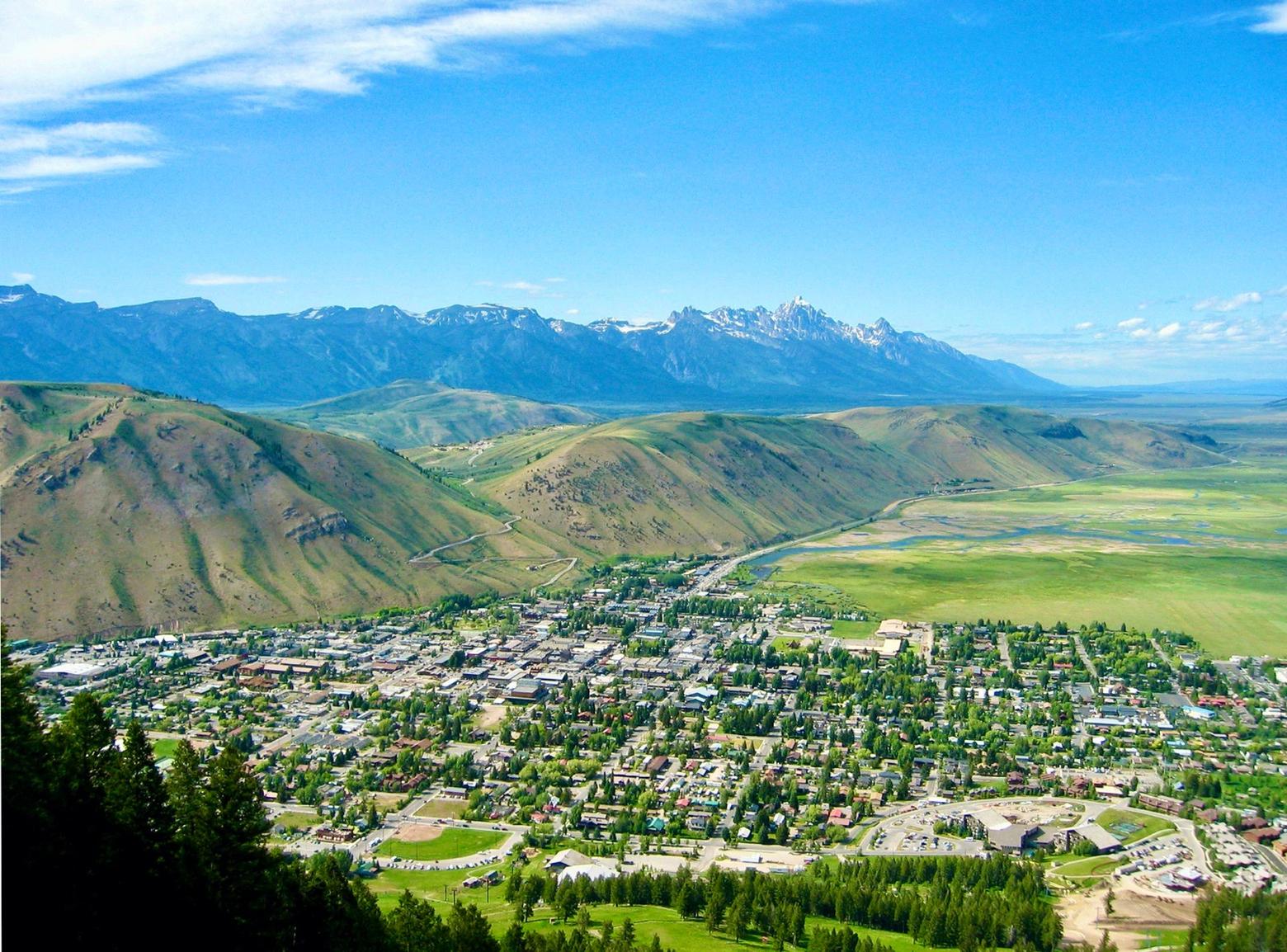Back to Stories
April 19, 2020
Two Metrics Point At Tail-spinning Economy In Jackson Hole
Jonathan Schechter, a noted data wonk and local elected official, looks at airport traffic and newspaper ads to gain a sense of Covid-19's impacts on a main tourism hub in Greater Yellowstone
by Jonathan Schechter
One of the most discombobulating aspects of our Covid-19 world is how rapidly things are changing. For example, nine weeks ago the S&P 500 recorded its all-time high. Today, it’s 18 percent lower.
Even more striking is that just five weeks ago, nearly 17 million more Americans had jobs than have them today.
To put that in context, only four states—California, Texas, Florida, and New York—have populations greater than 17 million. And 17 million is more than the population of 14 least-populous states combined. How can that be? Wyoming, least populous of any state, has a population pegged around 580,000.
At a local level, most indicators of Jackson Hole’s economy lag so far behind daily events that they're basically useless in the current situation. For instance, not long ago the Wyoming Department of Revenue released its April sales tax report. It detailed revenue Cheyenne received in March, which in turn reflected Teton County’s February sales.
As a result, we won’t know anything about March’s actual sales for another several weeks, anything about April’s sales until early June, and so on.
What to do?
Happily, with a bit of creativity we can at least get a sense of what’s happening to our economy. Two indicators strike me as particularly significant: commercial airline enplanements at the Jackson Hole Airport, and Help Wanted ads in the Jackson Hole News&Guide.
Regarding enplanements, for several years they’ve been growing like wildfire: 42 percent between February 2016 and February 2020, a compounded annual growth rate of 9.1 percent.
In March 2020, though, they fell 45 percent. And that drop occurred even though our ski areas were open roughly half the month.
Because there’s a rough correlation between enplanements and Teton County’s taxable sales, such a large drop is ominous indeed.
Similarly worrying is what’s happened to the column inches of Help Wanted classified ads in the Jackson Hole News&Guide. A little more than four weeks ago, the March 11, 2020 edition of the News&Guide featured 698 column inches of Help Wanted classified ads.
This was the biggest Help Wanted section since the end of May, 2019, and three percent higher than in the same week in 2019.
The paper in mid March – 2020's 14th edition – had 116 column inches of Help Wanted ads, an 83 percent drop in just four weeks. It was also an 86 percent drop from the same week in 2019.
Equally striking is how, in just four weeks, the mix of the paper’s Help Wanted ads changed. In the March 11 News&Guide the single biggest category of Help Wanted ads was in the tourism-related industries of lodging, restaurants, and retail. Four weeks later, the biggest categories involved jobs either generating revenue—sales—or keeping things alive: healthcare, landscaping, and maintenance.
What about tourism? Because this is the time of year when businesses begin gearing up for summer, the past few papers should have featured a big jump in tourism-related Help Wanted ads. Yet thanks to the uncertainty Covid-19 has produced, the column inches of such ads have fallen 99 percent in the last four weeks.
Combined, the plunging enplanement counts and free-falling Help Wanted data suggest Jackson Hole is in for a rough spring, and perhaps a rough summer as well. I say this because the airport numbers suggest fewer tourists will be heading our way, and the Help Wanted numbers suggest a diminished capacity to serve those who do come.
Combined, the plunging enplanement counts and free-falling Help Wanted data suggest Jackson Hole is in for a rough spring, and perhaps a rough summer as well. I say this because the airport numbers suggest fewer tourists will be heading our way, and the Help Wanted numbers suggest a diminished capacity to serve those who do come.
The latter point is especially important because among Jackson Hole’s many paradoxes, we have both the nation’s highest per-capita income and an astonishingly large number of low-paying tourism jobs. How large? Here’s how Teton County's job counts ranked nationally in 2018 in the major tourism-related industries:
Arts, entertainment, and recreation
Percentage of Teton County’s total wage-based jobs: 8 percent. Rank of that percentage among America’s 3,113 counties: 55 (top 2 percent).
Accommodation and food services
Percentage of Teton County’s total wage-based jobs: 35 percent. Rank of that percentage among America’s 3,113 counties: 6 (top 0.2 percent)
The two categories combined
Percentage of Teton County’s total wage-based jobs: 43 percent. Rank of that percentage among America’s 3,113 counties: 14 (top 0.4 percent).
When these figures are combined with the Help Wanted data, three points jump out.
First, at a time when getting accurate, reliable news is arguably more important than it has ever been, everyone who cares about Jackson Hole needs to be concerned about the sharp decline in the advertising that supports local journalism.
Second, the profound drop in Help Wanted ads in general, and tourism-related ads in particular, suggests Jackson Hole’s employers are taking a wait-and-see approach to hiring for this summer. In turn, this suggests they’re far-from-sanguine about the next several months.
Third, even if something extraordinary happens and the economy completely rebounds by, say, the end of May, it’s not clear whether local businesses will be able to handle a full complement of tourists. By this I mean that if employers normally need a couple of months of lead time to fully staff their businesses, and if they feel they shouldn't start that hiring process until early summer, it’s not clear how they’ll be able to get fully staffed before summer’s end.
Either way, these early indicator data suggest Jackson Hole’s merchants—and by extension the entire community—are in for a difficult stretch ahead. And that conclusion brings me no joy whatsoever.
EDITOR'S NOTE: Jonathan Schechter writes a regular blog at his website CoThrive in which he analyzes trends shaping Jackson Hole and the Greater Yellowstone Ecosystem. You can sign up for his newsletter by clicking here.



